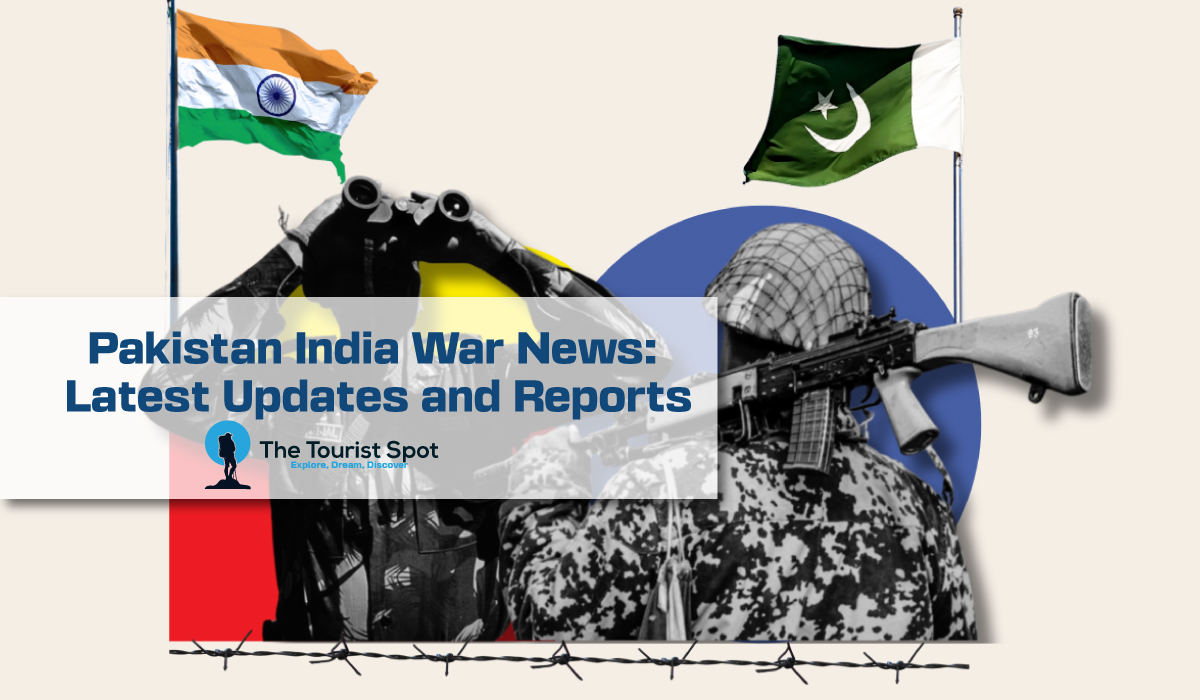The relationship between Pakistan and India has long been defined by tension, territorial disputes, and historic conflicts—especially over the region of Kashmir. While full-scale war has not occurred in recent years, rising tensions, military stand-offs, and border skirmishes frequently make headlines. In 2025, Pakistan India War News remains a high-interest topic for global observers, defense analysts, and regional stakeholders.
This article compiles the latest updates, military developments, diplomatic responses, and the ongoing impact of the India-Pakistan conflict on regional stability.
Background: Why Pakistan and India Remain in Conflict
The roots of the conflict date back to the partition of British India in 1947, which led to the creation of Pakistan. Since then, the two nations have fought three major wars, primarily over Kashmir, a region both countries claim in full but control in part.
Key Historical Conflicts:
- 1947-1948: First war over Kashmir.
- 1965: Second war resulting in a ceasefire.
- 1971: War leading to the creation of Bangladesh.
- 1999: The Kargil conflict in the Kashmir region.
Despite peace talks, confidence-building measures, and global mediation, deep-rooted mistrust continues to shape their relationship.
Latest Developments in 2025
As of April 2025, here are the major headlines making Pakistan India War News:
- Ceasefire Violations: Reports of multiple Line of Control (LoC) violations have surfaced, with both sides accusing each other of unprovoked firing.
- Military Movements: Satellite imagery shows increased troop activity near the LoC, raising alarm among regional security analysts.
- Airspace Breaches: Both countries have reported UAV (drone) intrusions across borders, fueling speculation of surveillance missions.
- Political Rhetoric: Leaders on both sides have made strong nationalistic statements, stirring emotions and concern over escalation.
So far, these tensions have not resulted in large-scale combat, but the situation remains volatile.
International Response
The international community, especially the United Nations, the United States, and China, has urged both nations to exercise restraint.
UN and Global Diplomacy:
- The UN has called for an independent investigation into alleged human rights violations in Kashmir.
- The U.S. has offered mediation while maintaining strong ties with both nations.
- China, a key regional influencer and close ally of Pakistan, has called for peaceful negotiations.
Geopolitical analysts warn that continued instability in South Asia could impact trade, energy routes, and regional alliances.
Impact on Civilians and Humanitarian Concerns
Beyond the headlines, ordinary people in both countries—especially near the borders—bear the brunt of rising tensions.
Civilian Impact:
- Displacement of families living near border zones.
- School closures and limited access to healthcare in conflict-affected areas.
- Heightened mental stress among youth due to war rhetoric in media.
Human rights organizations continue to highlight the need for transparency, humanitarian access, and the protection of vulnerable communities.
Media Role in Escalation and De-escalation
Both Indian and Pakistani media play a significant role in shaping public opinion. Sensational headlines and nationalistic coverage can often escalate tensions.
Media Trends in 2025:
- Increase in war-based propaganda and misinformation online.
- Social media platforms flooded with unverified reports and videos.
- Rising demand for independent journalism and fact-based reporting.
Efforts to combat disinformation are being initiated by civil society groups and independent watchdogs.
Possibility of Future Dialogue
Despite ongoing tensions, back-channel diplomacy is reportedly active between Islamabad and New Delhi. There are hints at:
- Bilateral intelligence sharing to avoid accidental escalations.
- People-to-people diplomacy, including cross-border trade and cultural exchanges.
- Third-party mediation, particularly through the Organization of Islamic Cooperation (OIC) and SAARC.
Hope remains that both nations will move toward sustainable peace and reduce reliance on military posturing.
Defense Spending and Military Posture
In 2025, both India and Pakistan continue to allocate significant resources to defense.
Pakistan’s Military Focus:
- Strategic reliance on nuclear deterrence.
- Development of tactical weapons and missile defense systems.
- Increasing cooperation with allies like China and Turkey.
India’s Military Strategy:
- Modernization of its armed forces and indigenous defense production.
- Enhanced surveillance through satellite and drone technologies.
- Strong maritime presence in the Indian Ocean region.
These developments keep military analysts closely watching for signs of escalation or containment.
Conclusion
Pakistan India War News remains a critical and sensitive topic in 2025. While both nations are currently engaged in a dangerous mix of provocation and restraint, the potential for dialogue still exists. Global peace depends on measured diplomacy, responsible media coverage, and mutual de-escalation strategies.
As the situation evolves, it is essential for citizens and leaders on both sides to remember the high cost of war—and the even greater value of peace.

